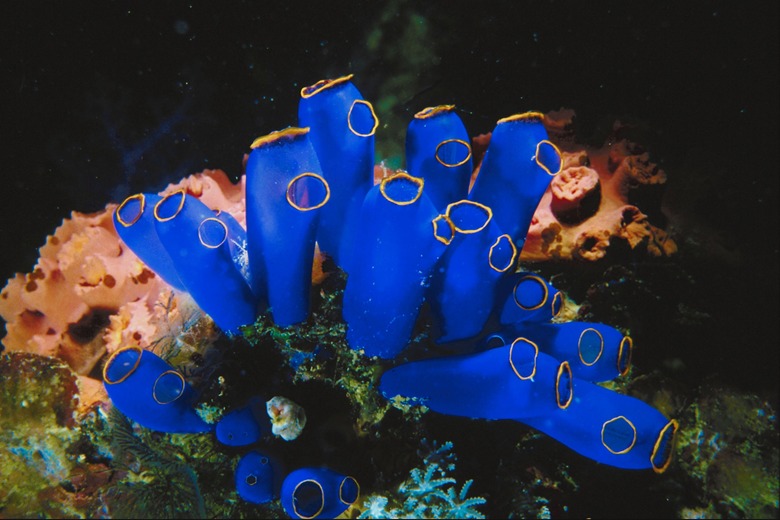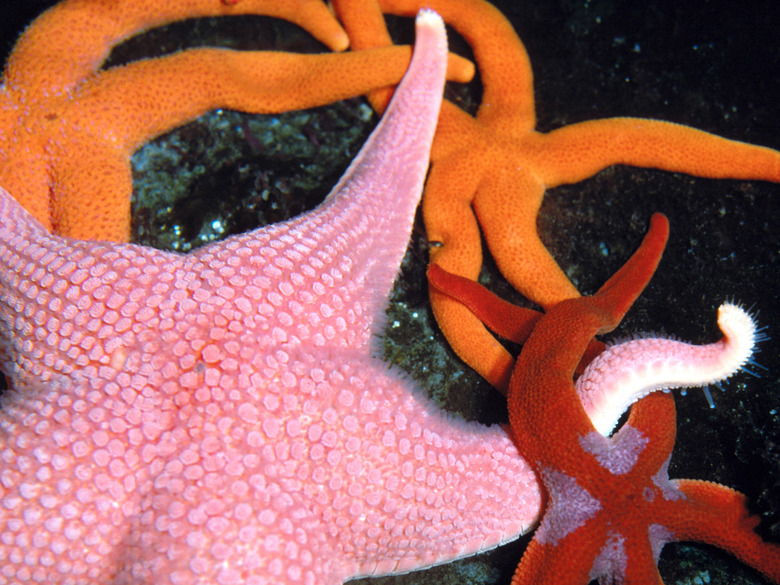Symbiotic Relationships In Coral Reefs
Symbiosis is when two organisms live together in a relationship in which at least one of them benefits. Sometimes, such as in the case of mutualism, they will be both benefit from the relationship. In instances of parasitism, one organism will benefit completely while the other is harmed or may even die. Commensalism is a form of symbiosis in which one participant benefits and the other feels no effects at all. Coral Reef ecosystems are teeming with symbiotic relationships.
Coral Polyps and Zooxanthellae
Coral Polyps and Zooxanthellae
Coral are colonial organisms — tiny organisms that grow in large groups, or colonies, to form the large, colorful structures that make up coral reefs. Inside each coral polyp lives a single-celled algae called zooxanthellae. The zooxanthellae capture sunlight and perform photosynthesis, providing oxygen and other nutrients to the coral polyp that aid in its survival. In turn, the zooxanthellae is provided with the carbon dioxide expelled by the polyp that it needs to undergo photosynthesis. The presence of the zooxanthellae also provide colored pigments to help protect the coral's white skeleton from sunlight. This is a mutual symbiotic relationship that is beneficially to both participants.
Sponges and Anemones
Sponges and Anemones
Sponges are longtime inhabitants of coral reefs. Using the coral skeleton as a place to anchor, these sessile, or stationary, organisms provide shelter for fish shrimp, crabs and other small animals. In both cases, the symbiosis is commensal.
Sea anemones are also common sessile residents of coral reef. Sea anemones are known for their mutually beneficial symbiotic relationships with clown fish and anemone fish. The tentacles of the anemones provide protection for the fish and their eggs while the anemone fish protects the anemone from predators such as the butterfly fish. They may also remove parasites from the anemone's tentacles.
Sea Stars and Worms
Sea Stars and Worms
Sea stars are often found on the reef. Crown-of-thorns sea stars are well-known predators of coral reefs and have been known to devastate entire coral reef colonies. This is a parasitic relationship in that the sea stars find food in the polyps of the coral whereas the coral is stripped down to its skeleton and left to die.
Many types of worms also make their homes within the cracks and crevices of the coral reef where they are safe from predators. Some species, however, such as the Christmas tree worms, actually bore into the skeleton of the coral, damaging it in search of food and protection. This is another example of a parasitic symbiotic relationship on coral reef.
Cite This Article
MLA
LaRoche, Carolyn. "Symbiotic Relationships In Coral Reefs" sciencing.com, https://www.sciencing.com/symbiotic-relationships-coral-reefs-7495247/. 24 April 2018.
APA
LaRoche, Carolyn. (2018, April 24). Symbiotic Relationships In Coral Reefs. sciencing.com. Retrieved from https://www.sciencing.com/symbiotic-relationships-coral-reefs-7495247/
Chicago
LaRoche, Carolyn. Symbiotic Relationships In Coral Reefs last modified March 24, 2022. https://www.sciencing.com/symbiotic-relationships-coral-reefs-7495247/



